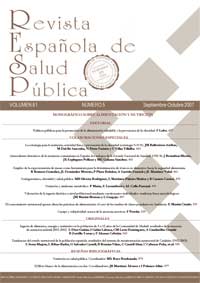Body and Subjectivity: About Anorexia Nervosa
Abstract
To start with the clinical description of anorexia nervosa is indicative of the difficulty involved not only with regard to its etiology (whether it is an endocrine, neurological or psychological disorder) but also with regard to its diagnosis (whether or not it is a hysterical disorder, whether or not it is a disease as such) and with regard to its treatment (the stubbornness of the symptom). The early-onset differential criterion is rejection. The subjects eating-related problem must be placed within the framework of the radical dependency the human organism has with regard to the mothers body, thus breaking the close connection between need and demand, which throws the instinctive life out of balance. Drive is the name given to this imbalance. Drived life must be controlled by wish. The transmitting of life is the transmitting of the innermost wish to live, without which the body fails or life and the body separate from one another. Rejection, which is the subjectivity-related aspect, then turns into anorexia in rejection of the body and in submission to bewildering ideals with which anorexic subjects attempt to find their bearings. Bulimia marks the most addictive aspect of impulsive imbalance. There is no ready answer to the question as to why anorexia occurs more among females than males. Female sexuality (the relationship with sexual wish and reproduction), as well as how in a aboundance society, women symbolize the trimming on the cake, an inert virtual figure. Anorexia nervosa can be taken as a pronouncement against an automated, devitalized family life and of a society characterized by commodity fetishism and cannibalism.Downloads
Published
2008-03-13
Issue
Section
SPECIALL COLLABORATIONS

